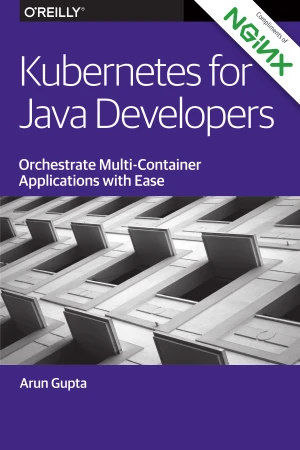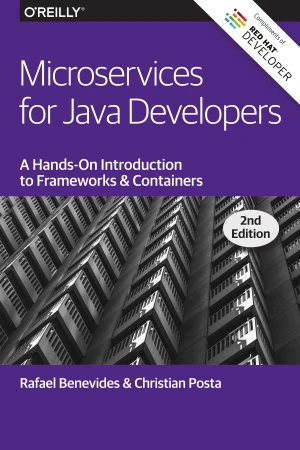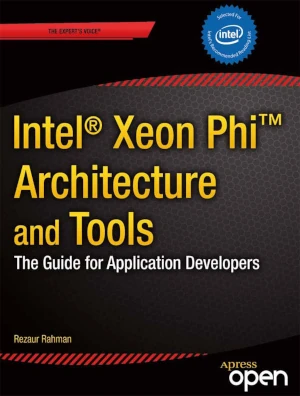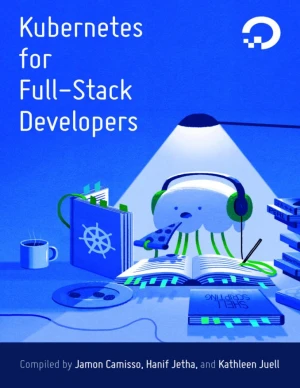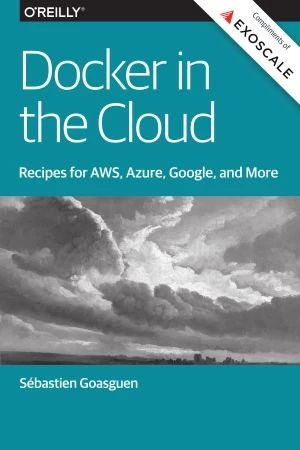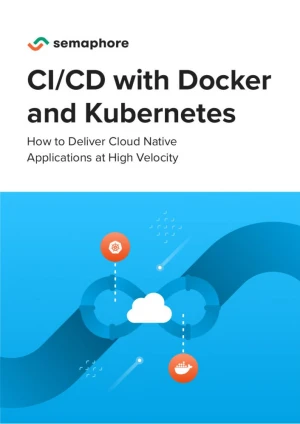Docker for Java Developers
Package, Deploy, and Scale with Ease
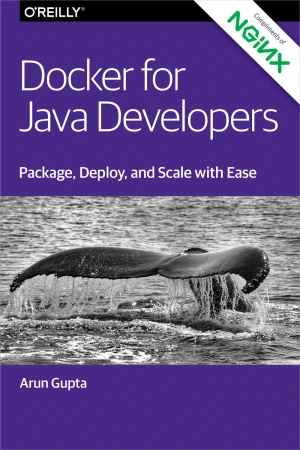

Book Details
| Author | Arun Gupta |
| Publisher | O'Reilly Media |
| Published | 2016 |
| Edition | 1st |
| Paperback | 89 pages |
| Language | English |
| ISBN-13 | 9781491974421 |
| ISBN-10 | 1491974427 |
| License | Compliments of Nginx |
Book Description
There are efforts like the Open Container Initiative (OCI) that aim to create an industry standard around container formats and runtime. Docker is the first container implementation based on OCI specifications, and is unarguably the most popular container format. Docker nicely complements the Java programming model by allowing you to package your application, including libraries, dependencies, and configuration, as a single artifact. The unit of deployment becomes a Docker image as opposed to a .war or .jar file. Different components of an application such as an application server, database, or web server can be started as separate containers. All of these containers can then be connected to each other using orchestration frameworks. The entire setup can then be deployed in a variety of operating systems and run as containers.
This book is targeted toward developers who are interested in learning the basic concepts of Docker and commonly used orchestration frameworks around them. The first chapter introduces the basic concepts and terminology of Docker. The second chapter explains, using code samples, how to build and run your first Docker container using Java. The third chapter explains how support for Docker is available in popular developer toolchains. The fourth chapter is a quick summary. The examples in this book use the Java programming language, but the concepts are applicable for anybody interested in getting started with Docker.
This book is published as open-access, which means it is freely available to read, download, and share without restrictions.
If you enjoyed the book and would like to support the author, you can purchase a printed copy (hardcover or paperback) from official retailers.
Download and Read Links
Share this Book
[localhost]# find . -name "*Similar_Books*"
Kubernetes for Java Developers
A Java application typically consists of multiple components, such as an application server, a database, and a web server. Multiple instances of each component are started to ensure high availability. The components usually dynamically scale up and down to meet the always-changing demands of the application. These multiple components are run on a c
Microservices for Java Developers, 2nd Edition
Is microservice architecture right for your organization? Microservices have many benefits, but they also come with their own set of drawbacks. With this updated edition, Java developers and architects will learn how to navigate popular application frameworks such Spring Boot and MicroProfile to deploy and manage microservices at scale with Linux c
Intel Xeon Phi Coprocessor Architecture and Tools
Intel Xeon Phi Coprocessor Architecture and Tools: The Guide for Application Developers provides developers a comprehensive introduction and in-depth look at the Intel Xeon Phi coprocessor architecture and the corresponding parallel data structure tools and algorithms used in the various technical computing applications for which it is suitable. It
Kubernetes for Full-Stack Developers
Whether you're just curious, getting started with Kubernetes, or have experience with it, this curriculum will help you learn more about Kubernetes and running containerized applications. You'll learn about core Kubernetes concepts and use them to deploy and scale applications in practical tutorials. By the end of this curriculum you'll be able to
Docker in the Cloud
With the advent of public and private clouds, enterprises have moved an increasing number of workloads to the clouds. A significant portion of IT infrastructure is now provisioned on public clouds like Amazon Web Services (AWS), Google Compute Engine (GCE), and Microsoft Azure (Azure). In addition, companies have deployed private clouds to provide
CI/CD with Docker and Kubernetes, 2nd Edition
Containers change how developers build, test, and deploy code. Adopting them takes time, and using them incorrectly can slow down the delivery process. Not every organization has a dedicated team of engineers to focus on this transition, unlike companies such as Spotify or Netflix. A startup CTO, for example, may need to prioritize shipping feature

